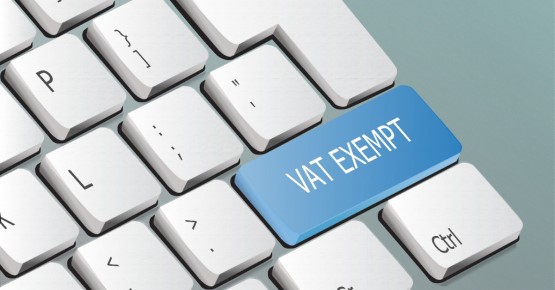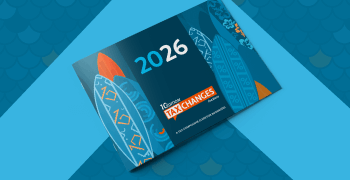
What is Value-Added Tax (VAT)?
If you plan to do business outside of the United States, you’ll need to understand value-added tax (VAT). It’s the most common consumption tax in the world.
About 170 countries levy a VAT or a goods and services tax (GST), which is similar. VAT is widely used throughout Europe, Central and South America, Africa, and Asia. Australia, Canada, and New Zealand are among the countries with a GST.
For U.S. consumers, VAT may feel a lot like a sales tax. For U.S. businesses, it probably won’t. U.S. businesses face a different tax burden when selling into Mexico or the U.K. than when selling into a state with sales tax. That’s why it’s critical for businesses to be aware of value-added tax and how it differs from sales tax.
Key takeaways
- VAT is an indirect consumption tax charged on the value added to goods as they move through the supply chain. Businesses can offset the VAT they pay on inputs against what they collect on outputs.
- About 175 countries have VAT or GST. VAT tax systems are much more common than the sales tax system used in the United States.
- Many countries have introduced electronic invoicing requirements to prevent VAT fraud and reduce the VAT gap — the estimated difference between the amount of VAT owed and the actual VAT collected.
This blog aims to help businesses understand the value-added tax system by answering the following questions:
What is VAT tax?
Value-added tax (VAT) is a broad consumption tax assessed on the value added to goods and services as they move through the supply chain. This includes labor and compensation charges, interest payments, and profits as well as materials. Since “tax” is included in the acronym “VAT,” you could simply ask, “What is VAT?”
Like any consumption tax, including a goods and services tax or retail sales tax, purchasers pay value-added tax. However, VAT is quite different from the U.S. sales tax system.
How does VAT work?
VAT is an indirect tax levied at each stage in the supply chain. The consumer doesn’t pay VAT directly to the tax authority. Instead, as with sales tax in the U.S., businesses are responsible for collecting VAT from customers then remitting VAT to the appropriate government entity.
VAT is typically charged as a percentage of the sales price and collected at each stage of the production chain: Any business that adds value to a good or service is required to pay VAT on the value added. Businesses that distribute a taxable product or provide a taxable service are also liable for VAT.
For U.S. consumers, this may seem like double taxation, but it isn’t. In fact, it’s designed to be a neutral tax. Each seller or supplier applies VAT only to the value they add at that stage. Moreover, most businesses can take a credit or deduction for the VAT they pay (input VAT) to offset the VAT they collect and remit (output VAT).
VAT examples
Here’s an example of how businesses would collect VAT and remit VAT throughout the supply chain.
- A raw materials dealer sells its product to a factory for €101
- €1 is VAT
- The raw materials dealer sends the €1 to the tax authority
- The factory uses the materials to produce laptop batteries, which it sells to a laptop manufacturer for €202
- €2 is VAT
- The factory deducts €1 for the VAT on the raw materials and remits the other €1 to the government
- The laptop manufacturer sells the laptops to a computer retailer for €303
- €3 is VAT
- The manufacturer deducts €2 input VAT and sends €1 to the tax authority
- The computer retailer sells a laptop to a consumer for €404
- €4 is VAT
- The retailer deducts the €3 tax paid to the manufacturer and sends €1 to the government
Who collects VAT?
As with sales tax in the U.S., businesses are responsible for collecting and remitting VAT. Because it is an indirect tax, businesses charge customers VAT then remit the tax due to the appropriate tax authority.
What’s the purpose of VAT?
Just like any other indirect tax or income tax, value-added taxes are designed to raise government revenue.
VAT: A less complicated indirect tax
The VAT system was designed to be more direct and less complicated than sales taxes or gross turnover taxes. Value-added tax is easier to track than some tax systems because it’s levied at each stage of the supply chain, and all merchants are required to maintain meticulous records of purchases, sales, and supplies. It’s also administered by the federal government rather than numerous state and local governments.
The VAT Gap: An unintended consequence
Historically, value-added tax has been relatively easy to avoid. The European Union has long suffered from an extremely high VAT Gap: the difference between the amount of value-added tax revenue expected and the amount actually collected and remitted. In fact, in 2020, intra-EU trade VAT fraud was believed to account for roughly a quarter of missing value-added tax revenues in the European Union.
The EU has been working to reduce the VAT Gap for years, and most EU countries are making progress, according to the European Commission’s 2023 VAT Gap Report. Member states lost an estimated €99 billion in VAT revenue to VAT fraud in 2020. In 2021, the amount of tax revenue lost to VAT fraud had dropped to €61 billion.
E-invoicing helps plug the VAT Gap
Electronic invoicing (e-invoicing) mandates are helping to plug the VAT gap in numerous countries. They do this by reducing errors and making it difficult for companies to sidestep their value-added tax obligations.
An e-invoice is not the same as a paper invoice that’s been uploaded to a digital format. E-invoices contain structured data that can be automatically exchanged and processed by accounting and ERP systems. As such, e-invoices allow the tax authority to see transactional tax data. Where live-reporting mandates have been implemented, the tax authority can see transactional tax data in real time. This reduces opportunities for VAT fraud.
Does my business need to register for VAT?
VAT rules vary by country, and some countries have a registration threshold. Depending on the nature of your business in a particular country, you may be required to register for VAT.
A business is typically required to register to collect and remit VAT in countries where it:
- Has a permanent establishment;
- Meets the value-added tax registration threshold; or
- Engages in certain activities
Permanent establishment
You typically need to register for VAT if you have a permanent establishment in a country with a VAT regime. This includes a fixed place of business or the fixed place of business of someone acting on your behalf. Having employees in the country could also create a VAT obligation.
Registration threshold
In many countries, nonresident businesses are required to register for VAT if their business activities exceed a set monetary amount. You must register for VAT in the U.K. if your VAT taxable turnover is more than £90,000, though you may voluntarily register for VAT at any time.
VAT thresholds vary by country and are subject to change. The U.K. VAT registration threshold increased from £85,000 to £90,000 effective April 1, 2024.
Specific activities
Certain activities, such as hosting a convention in the country, may establish a VAT (or GST) obligation for a nonresident business.
If your business qualifies for VAT filing, , you’re generally required to register for VAT before doing business in the country. Registration is required prior to collecting and paying VAT.
The European Union offers simplified VAT registrations and reporting options: the One-Stop Shop (OSS) and the Import One-Stop Shop (IOSS).

Can you be exempt from VAT?
It is possible to be exempt from value-added tax. VAT exemptions vary by country, business size and type, and product or service sold, so depending on the nature and location of your business, you may be exempt from VAT.
EU countries must exempt supplies of certain goods or services and can choose to exempt certain other supplies. Common exemptions include education, healthcare, and financial services.
Additionally, some countries may allow an exemption for businesses that make below a certain level of taxable sales of goods or services. VAT exemption registration thresholds vary by country. In national currency, the VAT registration threshold is EUR 30,000 in Austria for example, and DKK 50,000 in Denmark.
Effective January 1, 2025, new VAT rules for small EU businesses will extend the VAT exemption to eligible small businesses established in other member states. Learn more about the new VAT scheme.
Note that an exemption from VAT is not the same as a zero rate of VAT. When a transaction is exempt from VAT, the seller or supplier generally can’t claim a deduction for input VAT paid. Yet when a transaction is zero-rated, the seller (or supplier) has a right to deduct value-added tax paid on related purchases (the input VAT). The final price charged to the consumer doesn’t include VAT, and the VAT paid on inputs is deductible.
How do you file and pay VAT?
VAT returns are official tax documents used to file VAT. They detail all your organization’s transactions and applicable taxes and calculate what you owe or what will be refunded.
Different countries have different VAT filing deadlines, reporting frequencies, and formats. Some tax authorities insist on electronic filing, others accommodate but don’t require it (though if it’s allowed, it’s generally preferred). Tax authorities throughout the EU must allow you to submit your return online. As for payment, some entities permit international bank transfers, while some mandate local direct deposit or bank account transfers.
Filing VAT can be tedious. It requires you to keep meticulous records that include receipts of all your purchases and invoices that contain VAT. You’ll also need to supply records and accounting period summaries with information such as:
- Total sales and purchases
- Total VAT you owe
- The VAT you can reclaim
You may need to file a VAT return even if you have no VAT to report: The EU VAT Directive says returns must be made at least once a year, and many EU countries require monthly or quarterly returns.
Failure to keep appropriate records could lead to substantial fines and penalties, as could filing late or false returns. The U.K. changed the way penalties and interest apply to late VAT payments and returns effective January 1, 2023.
VAT FAQ
Do Americans have to pay VAT?
Americans do not pay VAT in the United States because the U.S. doesn’t have a value added tax. However, Americans pay VAT when traveling in countries with a value added tax.
What does VAT mean in simple terms?
VAT is a consumption tax assessed on the value added at each stage of the supply chain. Businesses collect VAT from customers and remit it to the tax authorities. Businesses can deduct the VAT they pay on business inputs.
Is there a way to avoid VAT?
Businesses and individuals are required to pay applicable VAT. In many countries, resident businesses must register for VAT only once they’ve hit a specific VAT threshold. Countries may have different VAT thresholds for nonresident businesses engaged in distance selling.
Can you claim VAT back?
Businesses can generally recover or reclaim VAT on certain items used exclusively for their business operations. Every country sets its own rules on what nonresident businesses can reclaim, and the rules vary enormously.
Bottom line
Avalara provides a list of international VAT and GST rates as well as information about VAT and indirect taxes by country. Yet rates are subject to change. Automating the collection and remittance of VAT helps ensure you apply the proper rate to each transaction.
Avalara can help you manage international tax compliance. Contact us to learn more.

Avalara Tax Changes 2026 is here
The 10th edition of our annual report engagingly breaks down key policies related to sales tax, tariffs, and VAT.
Stay up to date
Sign up for our free newsletter and stay up to date with the latest tax news.














